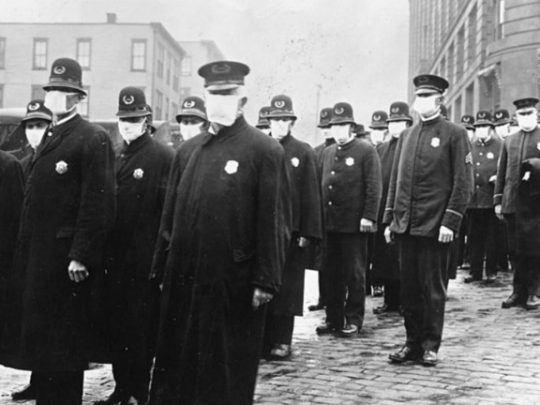AIDS, Spanish Flu, the PLAGUE? Just how deadly is the coronavirus compared to history’s WORST pandemics?

As the infection and mortality rates of the novel coronavirus continue to rise, people everywhere are growing increasingly concerned about the threat, but just how bad is the virus relative to past pandemics?
In a highly interconnected and globalized world, humanity is increasingly susceptible to outbreaks of disease. Recent decades have seen a slew of infectious illnesses spiral into epidemics and leave a trail of destruction in their wake.
Swine flu has claimed over half a million lives since it crossed over to humans in 2009; The West Africa ebola outbreak killed more than 11,000 people, and SARS, Bird flu and Mad Cow Disease also racked up hundreds of deaths and proved to be major causes for concern around the world.
Now people are gripped by fears of the deadly Coronavirus, which has infected over 17,000 and killed over 360 people in China alone. The virus has also spread to at least 20 other countries. While the situation is dire, it is important to put it in context.
Here, RT.com examines some of the deadliest pandemics in human history.
HIV/AIDS (25 million killed) 1981-2012
HIV/AIDS was first identified in the Democratic Republic of the Congo all the way back in 1976. The outbreak began in earnest in the early 80s, and it has remained one of the biggest scourges humanity has faced in recent decades. Nearly 25 million of the 65 million people infected during the pandemic died by the early 2000s, with 2.8 million people dying of AIDS in 2005 alone.

Both prevention and treatment for HIV infection have both vastly improved in the intervening years. According to the UN, some 37.9 million people were living with HIV by the end of 2018, of which 24.5 million were accessing antiretroviral therapy.
Asian Flu (2 million killed) 1956 - 1958
The Asian Flu virus originated in China in early 1956 before eventually spreading to Singapore, Hong Kong and the US. Though there are varying statistics for the exact death toll, World Health Organization data indicates that it claimed the lives of some two million people during its two-year rampage. Nearly 70,000 of the victims were in the US alone.
Research suggests the virus is a mixed species strain made up of avian flu and human flu viruses. Some scientists say the disease originated from a mutation in wild ducks that combined with a pre-existing human strain.
Spanish Flu (20 - 50 million killed) 1918
Arguably one of the worst pandemics to ever hit humanity, the Spanish Flu outbreak of 1918 spread from Asia, to Europe and North America, and even reached the Arctic and several remote Pacific islands.

Over 500,000,000 people were infected and between 20-50,000,000 people died before the pandemic ended in December 1920. Some researchers have estimated that the disease actually claimed 100,000,000 lives, which was roughly three to five percent of the Earth's population at the time.
What separated the flu from other influenza outbreaks was its unusual mortality pattern, which saw it strike down completely healthy young adults.
Black Death (75 - 200 million killed) 1346 - 1353
Perhaps the best known pandemic to ever hit humanity, the Black Death, racked up an obscenely high death toll of between 75 and 200 million people.

The plague completely devastated Europe, Africa and Asia, jumping continents via fleas living on rats that often travelled on merchant ships. In the seven years the Black Death lasted it killed between 30 and 60 percent of Europe's population.
Plague of Justinian (25 million killed) 541 - 542
A lesser-known pandemic, the plague of Justinian, afflicted the Byzantine Empire and is estimated to have cut Europe's population in half in just 12 months. Roughly 40 percent of Constantinople's population were killed and, at its height, the pandemic is believed to have killed an estimated 5,000 people per day.
- Source : RT


















